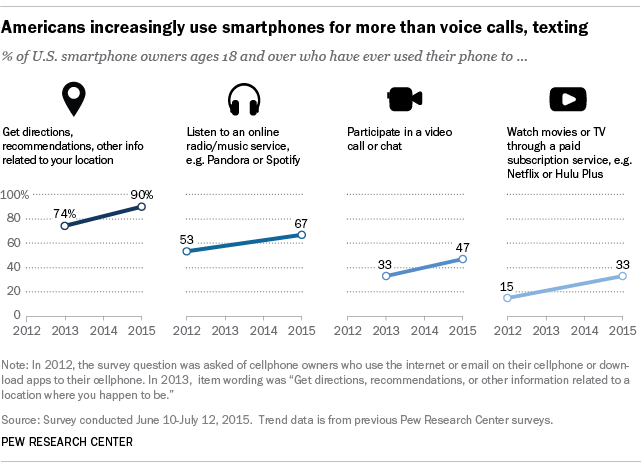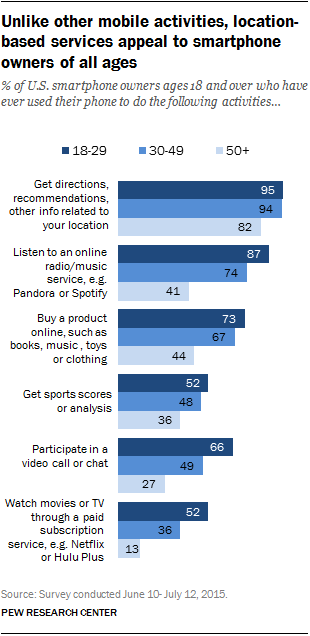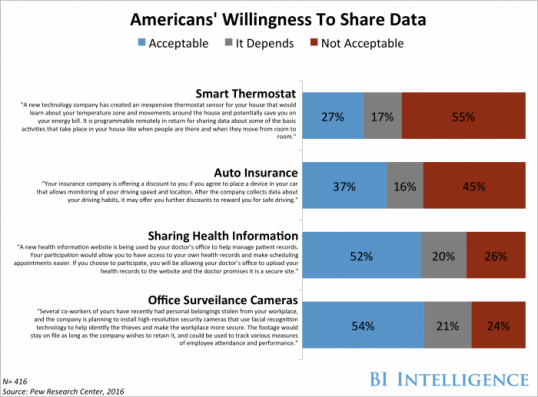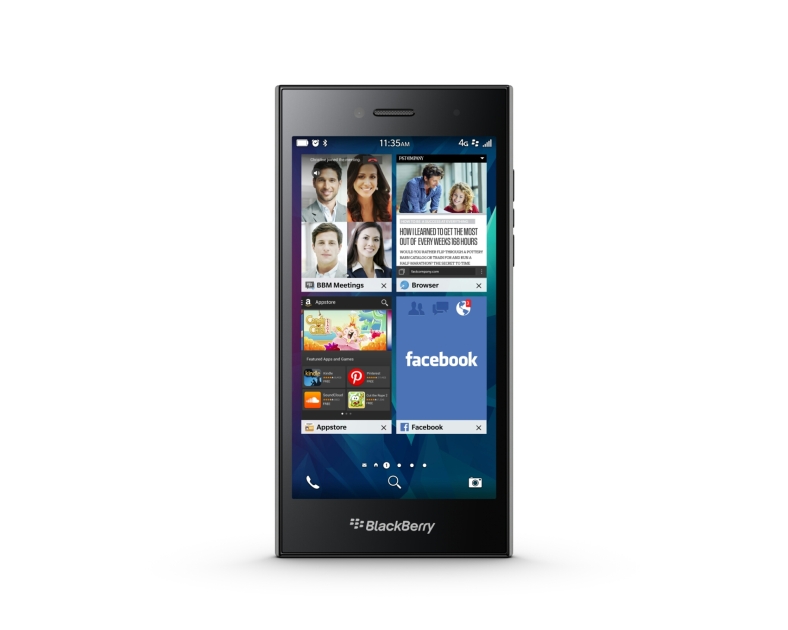Science in the next 50 years
Via: Pew Research
Findings
The American public anticipates that the coming half-century will be a period of profound scientific change, as inventions that were once confined to the realm of science fiction come into common usage. This is among the main findings of a new national survey by the Pew Research Center and Smithsonian magazine, which asked Americans about a wide range of potential scientific developments—from near-term advances like robotics and bioengineering, to more “futuristic” possibilities like teleportation or space colonization. In addition to asking them for their predictions about the long-term future of scientific advancement, we also asked them to share their own feelings and attitudes toward some new developments that might become common features of American life in the relatively near future.
Overall, most Americans anticipate that the technological developments of the coming half-century will have a net positive impact on society. Some 59% are optimistic that coming technological and scientific changes will make life in the future better, while 30% think these changes will lead to a future in which people are worse off than they are today.
Many Americans pair their long-term optimism with high expectations for the inventions of the next half century. Fully eight in ten (81%) expect that within the next 50 years people needing new organs will have them custom grown in a lab, and half (51%) expect that computers will be able to create art that is indistinguishable from that produced by humans. On the other hand, the public does see limits to what science can attain in the next 50 years. Fewer than half of Americans—39%—expect that scientists will have developed the technology to teleport objects, and one in three (33%) expect that humans will have colonized planets other than Earth. Certain terrestrial challenges are viewed as even more daunting, as just 19% of Americans expect that humans will be able to control the weather in the foreseeable future.
But at the same time that many expect science to produce great breakthroughs in the coming decades, there are widespread concerns about some controversial technological developments that might occur on a shorter time horizon:
• 66% think it would be a change for the worse if prospective parents could alter the DNA of their children to produce smarter, healthier, or more athletic offspring.
• 65% think it would be a change for the worse if lifelike robots become the primary caregivers for the elderly and people in poor health.
• 63% think it would be a change for the worse if personal and commercial drones are given permission to fly through most U.S. airspace.
• 53% of Americans think it would be a change for the worse if most people wear implants or other devices that constantly show them information about the world around them. Women are especially wary of a future in which these devices are widespread.
Many Americans are also inclined to let others take the first step when it comes to trying out some potential new technologies that might emerge relatively soon. The public is evenly divided on whether or not they would like to ride in a driverless car: 48% would be interested, while 50% would not. But significant majorities say that they are not interested in getting a brain implant to improve their memory or mental capacity (26% would, 72% would not) or in eating meat that was grown in a lab (just 20% would like to do this).
Asked to describe in their own words the futuristic inventions they themselves would like to own, the public offered three common themes: 1) travel improvements like flying cars and bikes, or even personal space crafts; 2) time travel; and 3) health improvements that extend human longevity or cure major diseases.
At the same time, many Americans seem to feel happy with the technological inventions available to them in the here and now—11% answered this question by saying that there are no futuristic inventions that they would like to own, or that they are “not interested in futuristic inventions.” And 28% weren’t sure what sort of futuristic invention they might like to own.
These are among the findings of a new survey of Americans’ attitudes and expectations about the future of technological and scientific advancements, conducted by the Pew Research Center in partnership with Smithsonian magazine. The survey, conducted February 13–18, 2014 by landline and cell phones among 1,001 adults, examined a number of potential future developments in the field of science and technology—some just over the horizon, others more speculative in nature. The survey was conducted in English and Spanish and has a margin of error of plus or minus 3.6 percentage points.
Among the detailed findings of this survey:
A majority of Americans envision a future made better by advancements in technology

When asked for their general views on technology’s long-term impact on life in the future, technological optimists outnumber pessimists by two-to-one. Six in ten Americans (59%) feel that technological advancements will lead to a future in which people’s lives are mostly better, while 30% believe that life will be mostly worse.
Demographically, these technological optimists are more likely to be men than women, and more likely to be college graduates than to have not completed college. Indeed, men with a college degree have an especially sunny outlook: 79% of this group expects that technology will have a mostly positive impact on life in the future, while just 14% expects that impact to be mostly negative. Despite having much different rates of technology use and ownership, younger and older Americans are equally positive about the long-term impact of technological change on life in the future.
Predictions for the future: eight in ten Americans think that custom organ transplants will be a reality in the next 50 years, but just one in five think that humans will control the weather
Americans envision a range of probable outcomes when asked for their own predictions about whether or not some “futuristic” inventions might become reality in the next half-century. Eight in ten believe that people needing organ transplants will have new organs custom-built for them in a laboratory, but an equal number believe that control of the weather will remain outside the reach of science. And on other issues—for example, the ability of computers to create art rivaling that produced by humans—the public is much more evenly split.
A substantial majority of Americans (81%) believe that within the next 50 years people needing an organ transplant will have new organs custom made for them in a lab. Belief that this development will occur is especially high among men (86% of whom believe this will happen), those under age 50 (86%), those who have attended college (85%), and those with relatively high household incomes. But although expectations for this development are especially high within these groups, three-quarters or more of every major demographic group feels that custom organs are likely to become a reality in the next half-century.
The public is more evenly split on whether computers will soon match humans when it comes to creating music, novels, paintings, or other important works of art: 51% think that this will happen in the next 50 years, while 45% think that it will not. In contrast to their expectations for custom-built organs, college graduates and those with high incomes are comparatively unlikely to expect that computers will advance to this level of development. Some 59% of college graduates and 57% of Americans earning $75,000 or more per year feel that computers will not be able to produce works of art that are on par with those produced by humans within the next 50 years.

To continue reading follow the source link below.
Source: Pew Research












